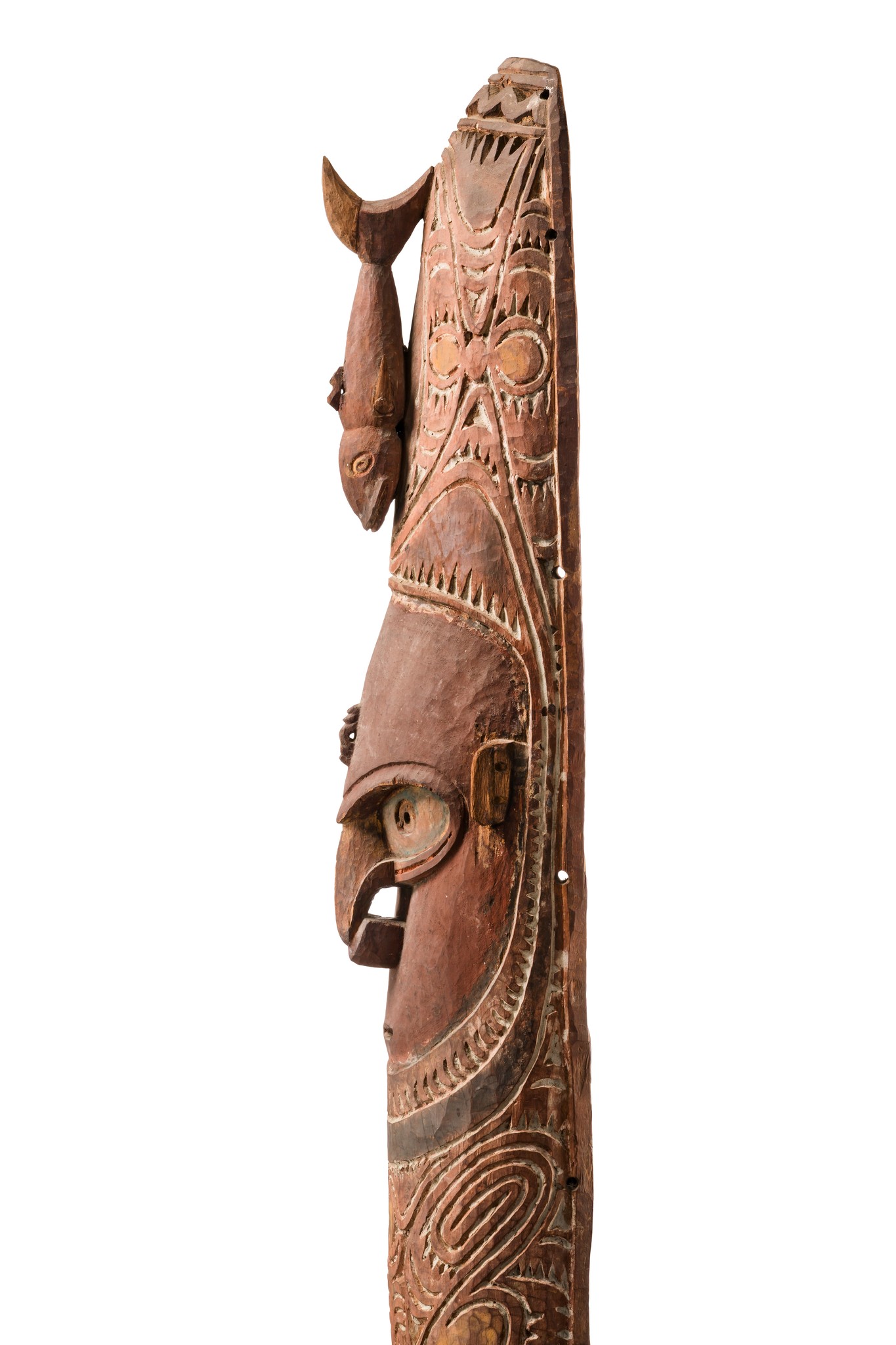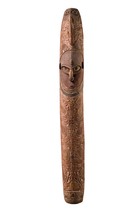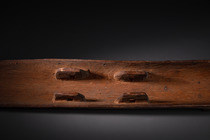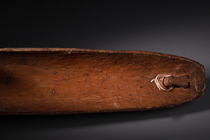Bouclier · Papouasie-Nouvelle-Guinée - Lower Sepik - Ramu River · ID: 3052145
Family-owned since then
Description
wood, pigments, rest.
This type of shield was already published in 1913 by Otto Reche in his standard work on the South Sea Expedition of 1908-1910 (p. 297, plate LVIII, 2. & 3.).
The shields are tall and relatively narrow. On the left side, they are lined with tufts of fibres along their entire length (as evidenced by the drill holes on this specimen). The front is adorned in the upper section with a carved face, which, according to Barry Craig, represents a “karkar” spirit. Above the face is usually an animal, in this case a fish.
The “karkar” spirits inhabit a cluster of sacred spears kept in the men’s cult house. Ulli Beier and Michael Somaré report the nature and function of the “karkar” spirits: “Close contact with the “karkars” is supposed to give a kind of immunity to the “gapar” (senior men who have gone through the finial inititaion) in battle. Before going to war the “gapars” used to scrape some of the black soot from the sacred spears and eat it with coconut milk. Symbolically they were thus absorbing some of the ancestral strength.
Henry Erfelings’ seafaring career began in December 1921 when he signed on with the Rickmers shipping company after completing a four-year apprenticeship in mechanical engineering. By 1929 at the latest, he had moved to Norddeutsche Lloyd. On 18 February 1930, he signed on to the D.S. Bremerhafen, where he worked as second engineer until February 1934. The D.S. Bremerhafen operated as a merchant ship between the Bismarck Archipelago and Hong Kong. During his time there, Erfeling acquired several works of art from Papua New Guinea, while others were given to him as gifts.
Littérature comparée
Reche, Otto, Der Kaiserin-Augusta-Fluss, Hamburg 1913, p. 297, Tafel LVIII, 2. & 3. Conru, Kevin (ed.), Sepik Ramu Art, Brussels 2019, p. 223, ill. 128




